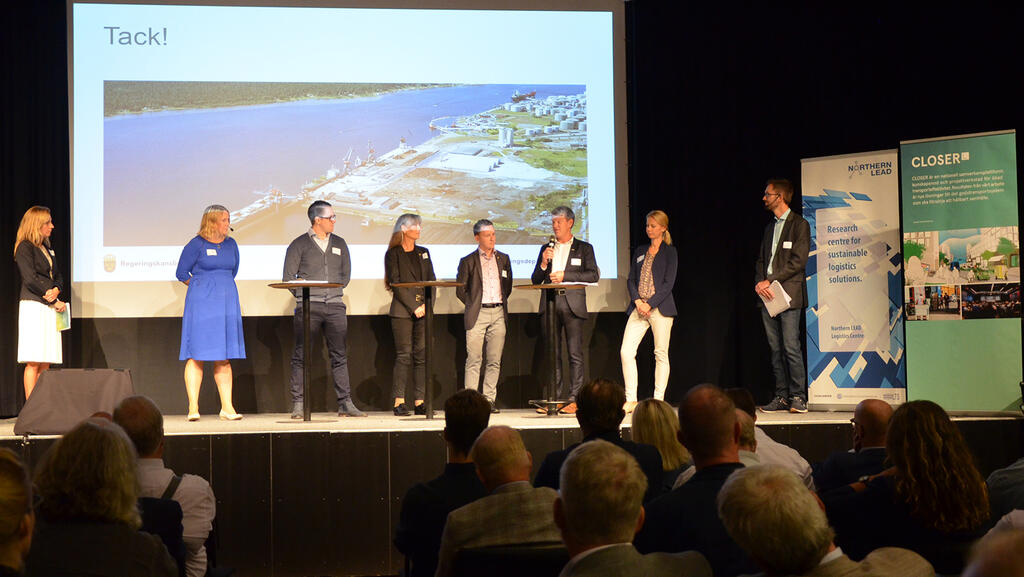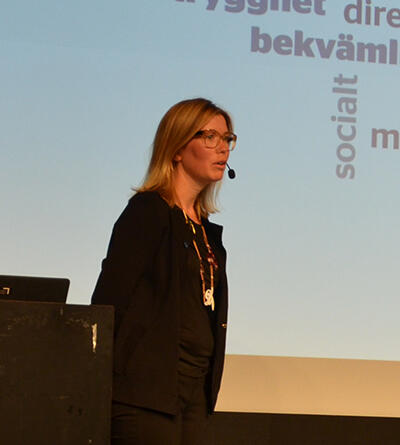Systems-thinking approach required in the transitioning of transportation
The theme of the Transport Efficiency Day (TREFF) 2018 conference at the Lindholmen Science Park in Gothenburg on August 30 was “How we can transition to a more transportation-efficient society.”

“The transition will happen. But there is a risk that it will not happen fast enough and that we will continue to increase demand for transportation,” warned the opening speaker, Professor Björn Sandén at Chalmers.
According to Sandén, if we are to transition to a climate-neutral transport system we need to:
- Change the basic energy source – to solar and wind combined with electricity and hydrogen gas.
- Consider the question: how much transportation do we need?
Solar and wind power are now so cheap that there is a great opportunity for the transport sector to embrace a completely new energy base, though the question remains whether the transition is happening fast enough.
“Efficiency enhancements are also important, but as we become more efficient the things we produce, in this case transportation, also become cheaper. This creates a society where we can afford to continue increasing our demand,” Sandén stresses. “We get a rebound effect.”
“Since the industrial revolution 200 years ago, our energy consumption has increased a hundredfold, and this cannot continue,” Sandén believes.
“We can continue to live sustainably at our level. But if everyone continues to relentlessly increase consumption, we will inevitably encounter various limitations.
“We need more knowledge and an integrated view of the transition process, simply to understand how technology, politics and the economy are interlinked.”
“Change will take place even without systems thinking,” according to Sandén.
“But there is a risk that developments could move in the wrong direction if we do not understand that one thing leads to another,” he says. “This is when things can drift off in a direction we do not want. We must therefore understand how things are connected even if we naturally cannot predict everything.”
Last summer, the government presented a strategy for freight transportation, the first ever, and Anna Ullström, Deputy Director at the Ministry of Enterprise and Innovation, gave a presentation about this. The freight transportation strategy – which was moreover welcomed by several speakers during the day – has three main parts:
- To strengthen Swedish competitiveness.
- To transition to become fossil-free.
- To continue to work with innovation, expertise and knowledge
Quite simply, the business community in Sweden is to increase its competitiveness – by working with research and development, traditional Swedish strengths, while freight transportation addresses the climate challenge.
Anna Ullström spoke about the permanent international expo where Sweden is continuously endeavoring to achieve a wide dissemination of the research and innovation conducted in the country in the field of transportation.
Following her speech, Anna Ullström commented on the conference’s basic question:
How can we transition to a more transportation-efficient society?
“Through more cooperation. By looking into how we can become better at filling our transportation to capacity, driving more efficient routes and making full use of the opportunities offered by rail and maritime transportation,” replied Ullström.
Anna Ullström hopes, in short, that the entire Swedish transportation system will now work together and the recent freight strategy will become both a platform and a launching pad.
“People are positive and this augurs well for the future, leading to a fruitful cooperation,”she said.
Helena Sjöberg, Head of Logistics Solutions at PostNord, spoke about how to meet new customer requirements. She also emphasized that it is important to collaborate and to make smart use of your resources.
In the future, PostNord wants to offer its customers home deliveries even when the recipient is not at home, a result of the rapidly expanding e-commerce.
PostNord is embracing the idea of delivery to a locked space using digital capabilities, basically a digital lock. This could be achieved in various ways, for example:
- Through your front door onto the hall carpet, but could also be;
- To a parcel drop box standing in your garden that replaces your post box;
- To the trunk of your car; or
- Through the use of parcel pick-up stations in public places or perhaps in a tenant-owner association.
“If we are to confront growth we need far more channels than at present, and digital locks provide an opportunity in combination with other solutions,” says Helena Sjöberg. “We do not think we can dictate how everything should develop, it concerns consumer power and solutions that fit your available budget, what design you want and the intended uses.”
The digital lock solution will also be used in business-to-business operations.
In all instances, it is about convenience – making life easier for private individuals and one example could be for tradesman who will no longer need to wait for material deliveries but can ask for the order to be delivered during the night,” says Helena Sjöberg.
Almost 20 speakers gave presentations during the conference, which was organized for the seventh time by CLOSER, the Swedish collaboration platform for transportation efficiency, and Northern Lead, a logistics center formed 30 years ago by the University of Gothenburg, Chalmers and Logistik och Transport Stiftelsen LTS, supporting research that works toward sustainable logistics development.
Sofie Vennersten, Program Director for CLOSER, comments that it is gratifying to see how interest for the Transport Efficiency Day, and for freight transport issues in general, is increasing every year:
“This year was a good combination of forward-looking outlooks and activities that are happening here and now,” says Sofie. “Many participants emphasized the need for greater collaboration in order to solve the challenges we are facing, so we are now looking forward to working in various ways to facilitate this.”



